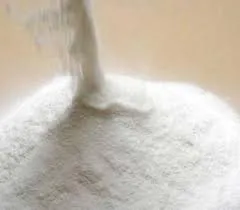
Dec . 07, 2024 11:13 Back to list
hpmc cellulose
Understanding HPMC Cellulose and Its Applications
Hydroxypropyl methylcellulose (HPMC) is a versatile cellulose ether that has gained immense popularity across various industries due to its unique properties and wide-ranging applications. This water-soluble polymer is derived from cellulose, a natural polymer obtained from plant cell walls. HPMC is prized for its ability to modify the viscosity and texture of products, making it essential in pharmaceuticals, food, construction, and cosmetics.
Properties of HPMC
HPMC is characterized by its excellent solubility in water, forming a clear solution when mixed. This feature is particularly beneficial in applications such as drug formulations, where uniform distribution and bioavailability of active ingredients are crucial. The viscosity of HPMC solutions can be easily modified based on the degree of substitution (the amount of hydroxypropyl and methyl groups introduced) and the concentration. As a result, manufacturers can tailor HPMC to meet specific needs, from low-viscosity grades suitable for light coatings to high-viscosity grades ideal for thicker gels and emulsions.
Another significant property of HPMC is its thermal stability. It does not gel under heating, which enables its use in various temperature-sensitive applications. Biodegradability and non-toxicity further enhance the appeal of HPMC, as they align with the growing emphasis on environmentally friendly products and sustainability.
Applications in Pharmaceuticals
In the pharmaceutical industry, HPMC is primarily employed as a binder, film former, and controlled-release agent in drug formulations. It plays a critical role in tablet manufacturing, where it ensures uniformity and enhances the stability of active ingredients. HPMC's ability to control the release rate of drugs is especially advantageous in the development of sustained-release formulations. It allows for a gradual and steady release of medication, improving patient compliance and reducing the frequency of dosing.
Moreover, HPMC is frequently used in ophthalmic solutions owing to its lubrication properties. It helps retain moisture and provides relief for dry eye conditions. The gel-like consistency contributed by HPMC enhances comfort and delivers medicated components effectively, underscoring its utility in healthcare.
Role in Food Industry
hpmc cellulose

HPMC finds extensive application in the food industry as a food thickener, emulsifier, and stabilizer. It is often utilized in gluten-free and low-calorie food products, providing texture and mouthfeel without adding significant calories. As consumers become more health-conscious, HPMC's ability to enhance the sensory experience of food without compromising nutritional value has made it a key ingredient in many formulations.
Furthermore, HPMC serves as a fat replacer in various food products, allowing manufacturers to maintain creamy textures in low-fat offerings. Its emulsifying properties aid in the stabilization of sauces, dressings, and desserts, ensuring a consistent and enjoyable product for consumers.
Importance in Construction
In the construction industry, HPMC is valued for its water retention, improving workability, and adhesion in cement-based products such as tile adhesives, mortar, and plaster. The addition of HPMC enhances the performance of these products, providing better adhesion to surfaces and reducing the risk of cracking. Its water-retention capabilities allow for prolonged workability, ensuring that the material remains workable for longer periods, even in challenging conditions.
Cosmetics and Personal Care
In cosmetics and personal care, HPMC functions as a thickening and gelling agent in a variety of formulations, including lotions, creams, and shampoos. Its ability to create a smooth and stable texture is particularly important for products aimed at enhancing the user experience. Additionally, HPMC's film-forming ability contributes to the longevity of cosmetic products, providing a desirable fresh appearance throughout the day.
Conclusion
In conclusion, hydroxypropyl methylcellulose (HPMC) is a multifaceted ingredient that plays a crucial role across various sectors. Its unique properties—such as solubility, viscosity, thermal stability, and biodegradability—make it an essential component in pharmaceuticals, food, construction, and cosmetic products. As industries continue to evolve and pursue sustainable solutions, the demand for HPMC is likely to increase, positioning it as a significant player in the future of material science and applications.
-
Versatile Hpmc Uses in Different Industries
NewsJun.19,2025
-
Redispersible Powder's Role in Enhancing Durability of Construction Products
NewsJun.19,2025
-
Hydroxyethyl Cellulose Applications Driving Green Industrial Processes
NewsJun.19,2025
-
Exploring Different Redispersible Polymer Powder
NewsJun.19,2025
-
Choosing the Right Mortar Bonding Agent
NewsJun.19,2025
-
Applications and Significance of China Hpmc in Modern Industries
NewsJun.19,2025







